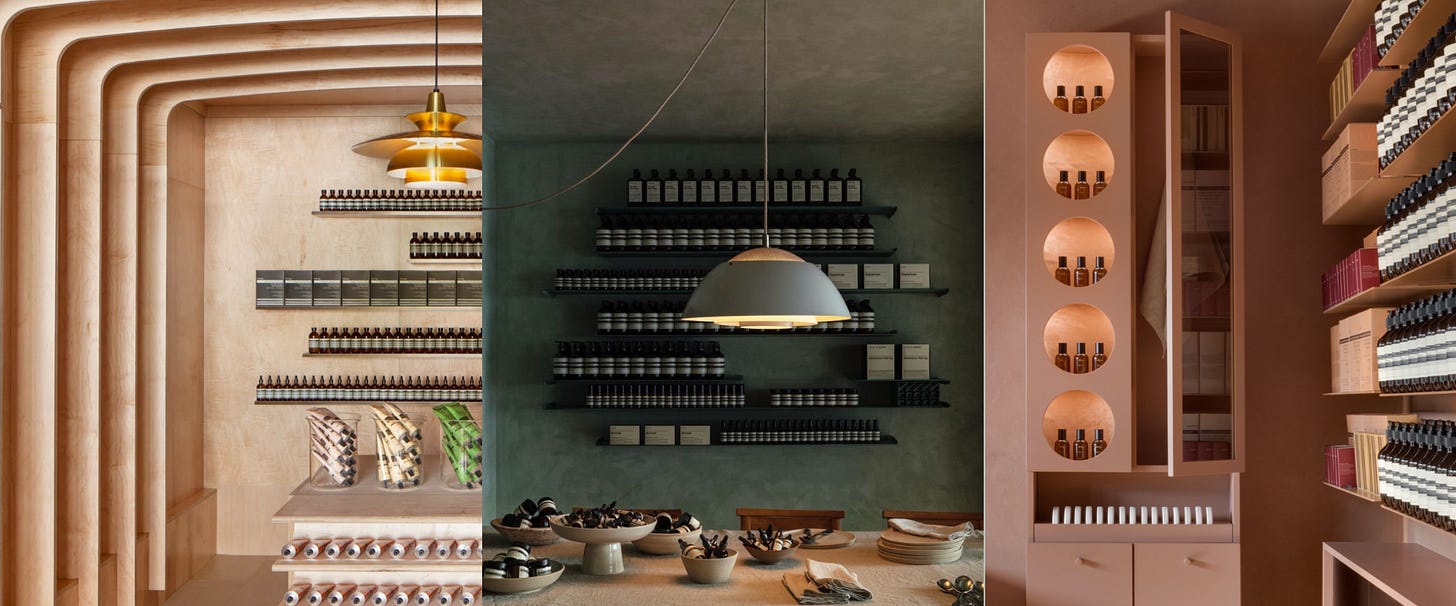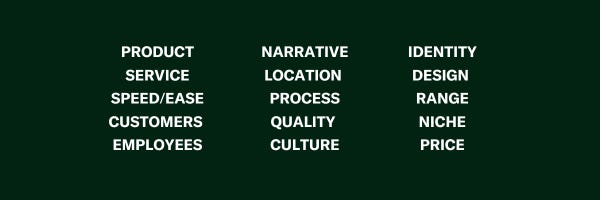From a Niche to Billion-Dollar Brand: A Lesson in Distinctiveness from Aesop
Aesop, recently acquired by L’Oreal for US$2.5 billion ($3.7 billion), is an example of a brand that has achieved exceptional (and profitable) growth in a competitive category.
The size of the deal is a sharp increase from the previous $100 million valuation just ten years ago and has been widely commented on in the media this past week.
Let’s take a look at some of the strategic decisions Aesop has made, and how we can apply them in other scenarios.
Early beginnings
Aesop started in 1987 when Dennis Paphitis launched a range of sensorial products that blended science with essential oils. While the company achieved annual turnover of approx. $3 million in its early years, it had difficulty expanding its customer base beyond early adopters and was solely reliant on wholesale partners (and shelf space) for distribution.
Recognising the growth limitations, a strategic choice was made to reinvent Aesop from a product-centric brand into a distinctive, retail-centric brand, and instead focus on creating valuable, owned brand assets to improve consumer awareness and connection. The transformation began with the first store in St Kilda, Melbourne, and has since expanded to more than 400 stores globally.
A singular approach
Aesop’s unwavering commitment to its distinctive brand philosophy and identity has resulted in an approach that has become synonymous with taste and positioned the brand at the intersection of luxury and clean beauty. Whilst other brands have chased short-term financial targets and relied on sales campaigns, Aesop has consistently invested in distinctive brand assets; opting for retail stores in cool neighbourhoods, designed by world-renowned architects with carefully considered details such as dim lighting, store music, and Helvetica font type.
For employees, clocks are mounted on the floor to help remain rooted in the present. Black ballpoint pens are the only approved writing instruments, and Moleskines are the notebook of choice.
When communicating with consumers, they don’t describe themselves as natural, organic, or sustainable like other brands. Instead, they combine poetic language such as botanical extracts and finely milled, with detailed, scientific explanations of ingredients and sustainability.
There are no photographs of models or celebrities, and they rarely use influencer marketing. If they do, it’s in the recognisable, design-led Aesop way.
Everything is done with purpose. Aesop’s product, positioning, cultural cachet, identity, and language are highly recognisable and influence people to believe there is no substitute.
Prior to L’Oreal’s acquisition, Aesop was growing at 20%+, three times faster than any other company in the sector, with a gross margin of 87% — higher even than L’Oréal’s own of 72%. Between 2012 and 2022, Aesop experienced an almost twenty-fold increase in sales, from $42 million to $800 million.
Building a distinctive brand takes time, effort, and constant innovation. But as Aesop’s success shows, it’s a powerful lever for profitable growth.
In a study from the Ehrenberg-Bass Institute, the inclusion of distinctive brand assets in advertising resulted in an average 34% increase in brand recognition. Another study analysing 1,300 campaigns, revealed that campaigns featuring recognisable brand ideas and assets had a 62% higher short-term return on investment compared to those that did not (1).
Distinctive brand assets have two qualities.
First, it must be ‘owned’ by your brand. This means that consumers unmistakably link that asset with your brand. Consumers see the asset and use it as a ‘mental shortcut’ to identify your brand.
Second, a brand asset must be relevant to, and amplify, the brand value proposition. As the asset is then iterated consistently across multiple touch points, it reinforces the mental structures that consumers have associated with your brand. This creates another ‘mental shortcut’ — one that reminds consumers of how your brand makes them feel and therefore more likely to browse or purchase.
To assess how different or distinctive your brand is, we can do these things:
1. Take some time to evaluate your brand in the below areas (this list is not exhaustive).
How do you rank on distinctiveness (features that make your brand easily identifiable) and differentiation (features that differentiate your brand in the mind of your customer)? This exercise is best done in consultation with your leadership team.
2. Research and purchase from your brand as a consumer. Review your brand assets (visual, verbal, sonic, experiential) and that of your competitors. How cohesive and unique does your brand look compared to others? Which assets are the most valuable and have untapped potential? Map them out in a Distinctive Assets grid to inform planning.
3. Run a short brand measurement survey with 1,000 consumers (customers and non-customers). Capturing objective customer and non-customer feedback will help identify any issues related to weak differentiation and understand what ‘mental shortcuts’ people have to your brand.
Understanding the value of brand is essential for any company wanting to drive growth, and we're here to help bridge that knowledge gap.
Sign up for our newsletter to get our insights published 1-2 times a month, and come connect with us on our website, Instagram or LinkedIn.




